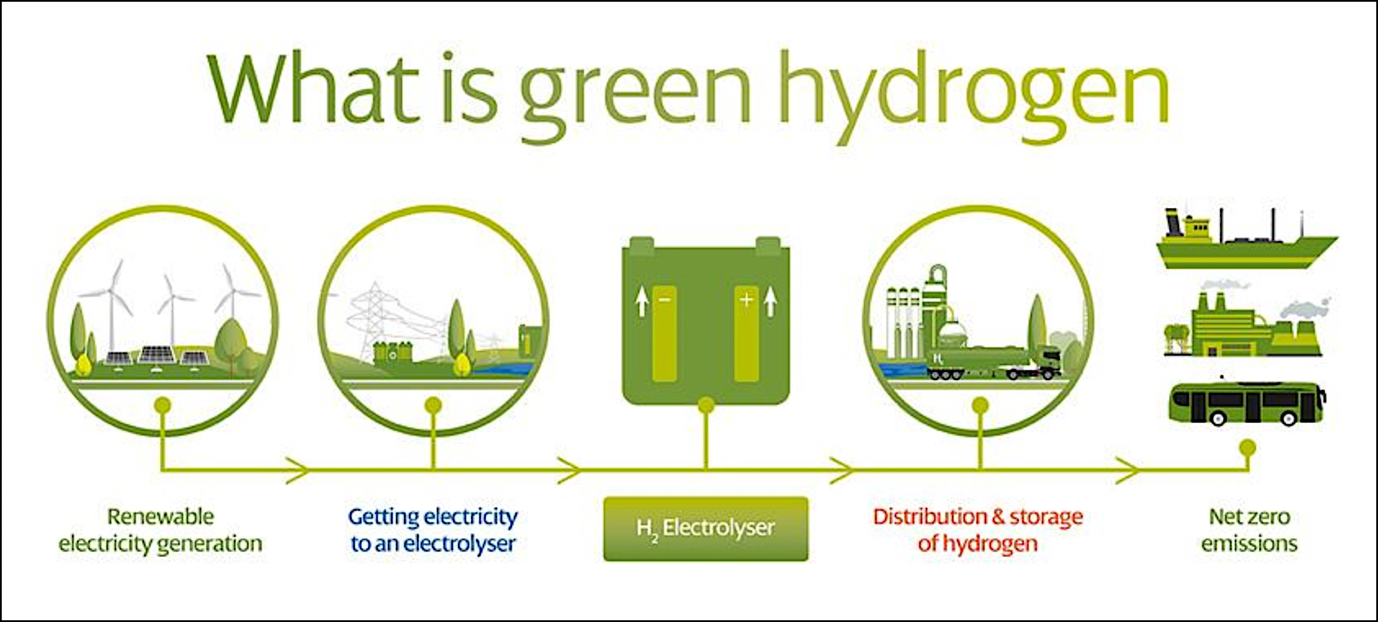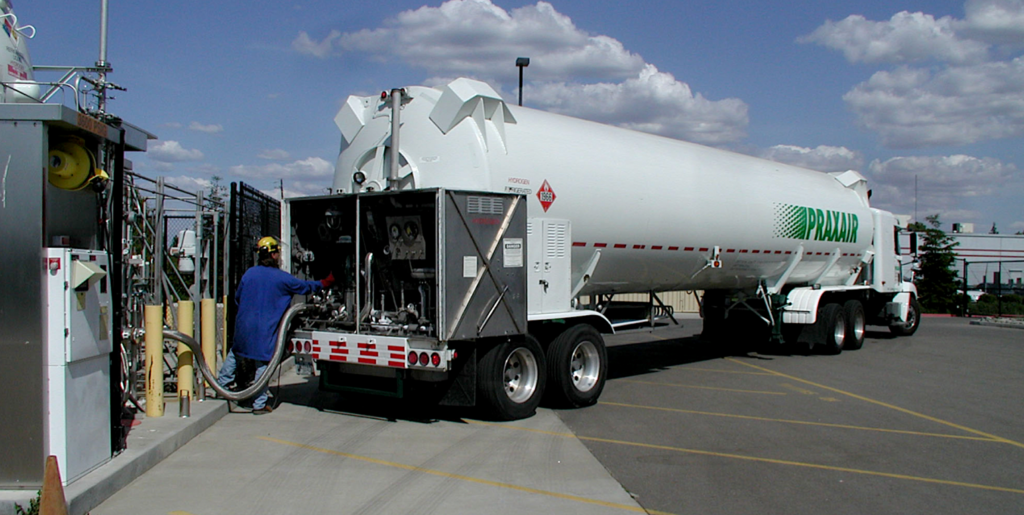It was a typical afternoon in his underground laboratory, where Professor Jacques Pironon spent most of his time sifting through the ancient rocks and sediments of the Lorraine Basin in north eastern France for traces of methane. Little did he know that fate had something even more significant in store for him.
While his team from the University of Lorraine’s GeoRessources Laboratory collected the usual readings, they noticed an anomaly in the data. When they drilled down to examine it, they were shocked to discover not methane, but a truly gigantic reservoir of pure hydrogen that had been trapped at depth for unknown millennia and was only now being released for humanity’s future needs. According to their calculations, the deposits’ potential came to between 6 and 250 million metric tons of hydrogen at a depth of around 3,000 metres. “This was no ordinary find, but a true gift of chance,” said the astonished Pironon later. Not so long ago, such a find would have been consigned to the annals of geology. But at a time when the world is looking for solutions to the transition from carbon, this hydrogen harvest has a much greater significance.
Some called it fate, others simply luck. But everyone agreed that day that it was Professor Pironon’s destiny to unearth a treasure that could light the way to global net zero. A reward for curiosity and perseverance in the subterranean darkness that could bring a new dawn to the world above.

This wasn’t the first discovery of underground hydrogen in this area. Philippe De Donato, co-director of research at the University of Lorraine and Jacques Pironon “accidentally” came across a similar discovery as part of the Regalor research project in collaboration with the Française de l’Energie (FDE), an independent multi-energy company, the University of Lorraine and the CNRS, the National Centre for Scientific Research.
In May 2023, FDE announced the discovery in a press release and pointed out that the hydrogen measurements had been carried out at

the Folschviller drilling site, which had previously been drilled in the carbonaceous aquifer of the Lorraine basin.
Launched in 2018, the project aimed to validate an assessment carried out in 2012 by the French Institute for Petroleum and New Energies IFPEN. After analysing a soil sample from the basin, the institute found that it contains 370 billion m3 of methane, which is equivalent to eight years of gas consumption in France.
Be that as it may, in recent years, a revolutionary new fuel has captured the imagination in boardrooms and council chambers around the world. Clean hydrogen is being touted as the silver bullet to solving our climate problems and achieving a net zero future.
Governments have unveiled ambitious plans to use hydrogen in everything from buses and boilers to blending it into our gas pipelines. Industry giants have unveiled bold visions of hydrogen-powered airplanes and homes heated by this clean energy source.
The hype around hydrogen’s potential has reached fever pitch, with glowing predictions of a bright green future. But wait a minute – behind the promises lies a harsh reality!.

Because while hopes are high, the production of clean hydrogen today is still in its infancy.
Most studies show that the cost of scaling up the production of green hydrogen in this decade will still be very high. It must be used wisely so that budgets do not evaporate into thin air. Before we get carried away imagining a hydrogen-powered world, we should heed the analysts’ words of warning. The hype threatens to exceed what is really possible given today’s technologies and costs.
It will take far more than policies and prototypes to fulfil the promise of hydrogen. Only if the breakthrough is achieved will this fuel be able to play the ambitious role envisaged in the net zero plans. Its time may yet come – but that day is not quite here yet.
| A universal fix?
The Carbon Trust is a non-profit organisation based in the United Kingdom, established in 2001 with the aim of supporting businesses and the public sector in reducing their carbon footprint and moving to low-carbon operations; it provides a range of carbon management and consulting services.
According to a study published in June 2023, the uptake of clean hydrogen is critical to achieving net zero targets as it facilitates the decarbonisation of challenging sectors and the entire integrated energy system. However, over-enthusiasm for hydrogen also risks diverting focus from more efficient low-carbon alternatives in certain sectors, thereby hindering progress towards net zero.
Most of the hydrogen produced today is anything but clean. ‘Grey hydrogen’ emits carbon from converted methane into the sky. ‘Blue hydrogen’ captures this carbon, but some of it still escapes through the cracks. ‘Black hydrogen’ is forged from the dirty flames of coal itself.

Only a tiny fraction – the elusive 1 per cent – is produced by the original splitting of water. Its production is both costly and limited and is therefore aptly named ‘green hydrogen’. Any other carbon-free form would be a blessing in disguise.
And so rumours circulated about a pure hydrogen that came not from industry, but from the hidden riches of nature. Some called it gold, others white, but all agreed that it was a gift from the ground. Through a mysterious geological alchemy, water and ferrous rock come together, splitting the former to release its hydrogen richness.
Proof of the existence of this mystical hydrogen has now been found. A natural spring flowed under the sands of western Mali, and a mega-cache lay beneath the Lorraine rocks in France. Surely there are more in other countries and seas waiting to be discovered.
Could this hydrogen, which forms without effort, be the key to the purity of the planet? An Eldorado for clean energy, where water and minerals combine to produce emission-free energy, provided free of charge by the invisible hand of nature? The world is watching and hoping that this promise will one day be fulfilled.
With the discovery of a huge hydrogen deposit deep underground, scientists in France may have stumbled upon a treasure trove of clean energy. According to estimates by Professor Pironon, the deposit contains an incredible 250 million tonnes of the coveted fuel – enough to meet global demand for years to come.
But could this discovery be just the tip of the renewable energy iceberg? Curious scholars at the US Geological Survey (USGS) are betting that countless more deposits of the clean-burning gas lie dormant around the world, with some projections putting the total at thousands or even billions of megatons.

But not all of these underground hydrogen deposits are so easy to tap. As prudent petroleum geochemist Dr Geoffrey Ellis notes, most of it lies hidden in inconspicuous or impractical niches kilometres underground or in the sea. “This is the global model, and the vast majority is going to be inaccessible – too deep or too far offshore, or in accumulations that are much too small for it to ever become economical to actually access,” he muses, pointing to locations too remote or reserves too small to justify the cost of extraction. On paper, the Earth’s hydrogen supply may be abundant, but tapping into its true potential presents us with puzzles yet to be solved.
But even if the inaccessible supplies are considered, the USGS forecasts still reveal unimagined possibilities. They calculate a readily available supply of around 100,000 megatons worldwide – enough to meet global demand for centuries.
According to the insightful Dr Ellis, harnessing these underground riches could use technologies we already have in hand. “The methods should be similar to those used for natural gas,” he says. Where the mastery of methane extraction is well advanced, the extraction of hydrogen could be child’s play by comparison.

So far, Bourakébougou in Mali is the only commercial producer of the ‘white gold’, but only extracts five tons per year. There are however more and more endeavours to expand the hydrogen harvest worldwide. Earlier this year, Bill Gates’ company Breakthrough Energy Ventures invested 91 million dollars in Koloma, an American start-up company that is searching for untapped white reserves within the borders of the United States. The visionaries see the huge opportunity right under our feet – if our ingenuity can finally unlock this buried wealth.
In the meantime, British seismic prospecting firm Getech are scouring promising areas on the trail of hydrogen in Morocco, Mozambique, South Africa and Togo. With their experienced eyes, they search for telltale traces of the clean-burning gas under a wide variety of soils.
Another hotspot that is attracting a lot of interest is South Australia, which, in 2021, added hydrogen to the list alongside petroleum and other terrestrial energies authorised for exploration under the Petroleum and Geothermal Act 2000.

With the amended regulations, South Australia has thrown the once closed doors to discovery wide open. Surveyors can spread out across the unspoilt expanses and adjust their instruments to locate all the hidden sources that this visionary policy has brought within reach. Getech and its pioneering colleagues around the world are now pressing forward, fuelled by the conviction that the future of clean energy lies not just above our feet, but below them.
Just recently, a new Australian company called Gold Hydrogen caused a stir with the discovery of a sprawling field of hydrogen hidden deep in the state of South Australia. If all goes according to plan, the riches could start flowing next year or the year after.
For now, however, the titans of the industry are keeping their cards close to their chests. “The big oil companies, I think, are very interested, but they’re currently sitting on the sidelines, watching, taking a bit of a wait-and-see attitude. They’re letting the start-ups take the risk – at this point this is a highly risky venture,” says Goeffrey Ellis. “Once we see some production data from some of these wells, we will certainly see the major oil and gas companies moving into this space.”
Only when real production data is available will the experienced oil and gas giants get involved, he predicts. Until then, there is a lack of local hydrogen markets, which reduces the incentive for exploration. According to the Hydrogen Council, Europe is leading the way in renewable energies with 35% of global investments, while North America and Latin America are each doing their bit, with around 15%.

But a conundrum is keeping supply and demand in a bind, says Ellis. “So there’s a sort of chicken and egg problem: markets aren’t really developing until they see the supply, and the supply won’t really be developed until they see the market,”
But where political will is driving the cause of discovery, our clever mind sees solutions within reach. “I think it’s a function of how much effort we put in. If we really decide this is something we need to figure out quickly, I think it could be done.” he muses.
Determined pioneers could crack the code and set a clean cycle in motion.
Clean hydrogen is a promising building block in our quest for net zero. However, the road there is winding and harbours potential dangers around every bend. For governments and industry to steer hydrogen towards its decarbonising destiny, a deft hand at the helm is required.
This technology alone cannot eradicate carbon – it is just one weapon in our armoury against climate chaos. So, proponents of hydrogen technology must be wary of seeing it as a silver bullet. Even if the hydrogen charter sets out new frontiers for a fossil fuel-free future, we must approach the realisation of its potential with our eyes wide open.
We need to appreciate the pitfalls of hydrogen as much as we praise its potential. Priorities must be set to maximise system-wide decarbonisation, not short-term gains. The risks must be contained, not ignored. Only through prudent governance can we steer the development of hydrogen in a direction that gets us closer to net zero – not drifting towards ambiguous goals.
There is still a long way to go. But if the harbingers of hydrogen focus on the far horizons and the near obstacles, this emerging energy may yet deliver the decarbonisation success we crave.

